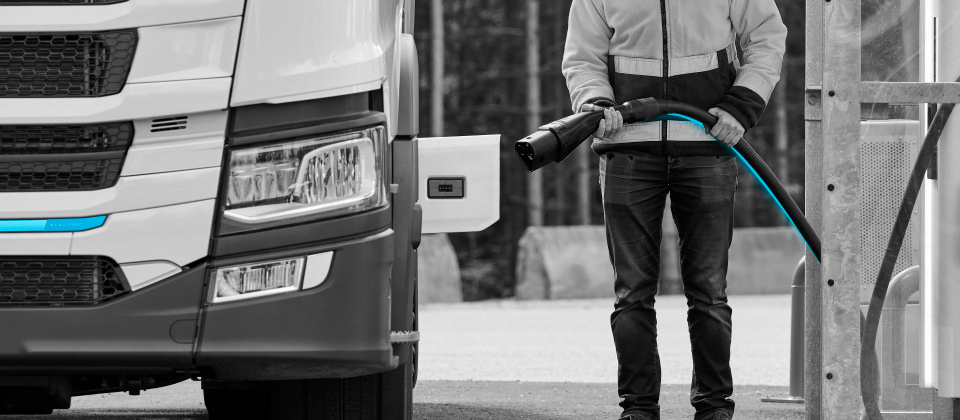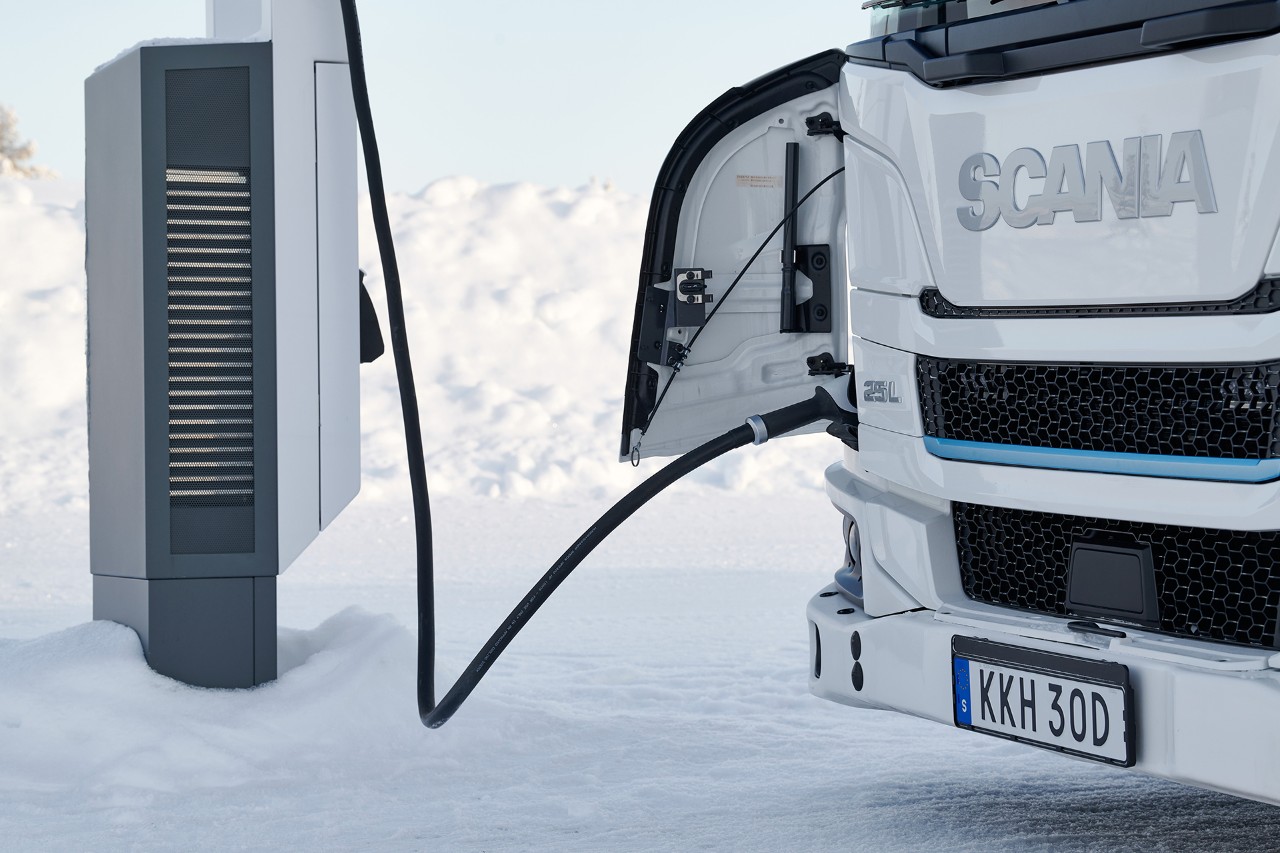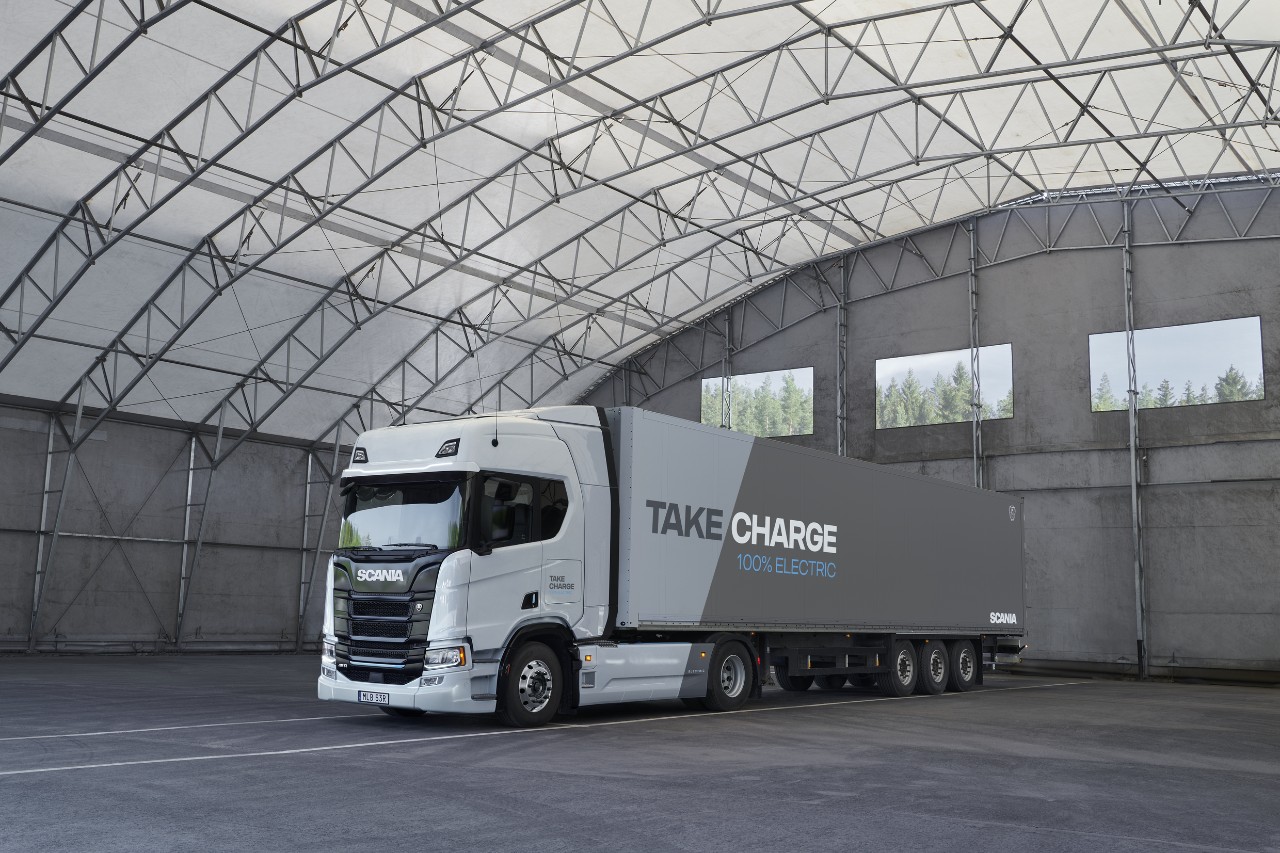
Megawatt charging – all you need to know about MCS
Megawatt Charging System (MCS) is the next major milestone in heavy transport electrification. With its ultra-fast charging capabilities, MCS removes one of the final barriers to applications such as long-distance heavy haulage. Here’s what you need to know.
1. What is MCS, and why is everyone talking about it?
MCS is a new international standard for charging heavy-duty battery electric vehicles (BEVs) at very high power levels – up to 1,000 amps, and even higher as the standard continues to evolve. Designed to maximise stability and minimise downtime, it makes long-haul electrification not just possible, but also practical.
With MCS, a truck can charge from 20 to 80 percent in less than 30 minutes. That’s roughly the same length as a driver’s mandatory 45-minute rest after 4.5 hours of driving. In practice, charging no longer disrupts the schedule – it fits naturally into it.
2. What are the differences between MCS and the current standard, CCS2?
Today’s battery electric trucks use CCS2, typically delivering up to 350–400 kW. This is sufficient for overnight depot or destination charging, as well as for en-route top-ups.
MCS, by comparison, is designed for charging speeds up to 3.75 megawatts – roughly ten times faster. This leap is made possible by pushing current levels beyond 1,000 amps, supported by a liquid-cooled cable and connector. MCS also introduces an improved communication protocol, making charging more stable and predictable compared to CCS2.
3. What are the primary advantages of MCS?
With MCS, charging is considerably faster and more stable than the current standard, which enables BEVs to be used on demanding long-distance routes. Charging can be done during legally required rest breaks, which maximises uptime. Faster charging also opens up new spec options: with shorter stops, operators can choose smaller battery packs, increasing payload and improving the overall productivity.
4. What does the cable and connector look like? Is it safe to use?
Despite the increased power, the MCS connector is designed to be ergonomic and intuitive. The cable is slightly thicker and liquid-cooled to safely manage the heat generated during charging, but handling it is straightforward. For the driver, the experience is much like using today’s fast chargers: plug in, charge, unplug.
The whole system – including enhanced cooling of critical cables and components in the electric truck – is also built to support a safe and efficient working environment, designed for ease of use and minimal physical strain.
5. When will MCS become a real-world option?
Scania battery electric trucks will be available with MCS from mid-2026. Charging infrastructure is also catching up, with the first public MCS corridors along major routes in Europe planned for 2025. Additionally, through the Milence initiative, Scania and its partners aim to establish 1,700 high-performance charging points across Europe by 2027.
6. What is a typical use case for MCS?
A common use case for MCS is heavy-duty long-haul transport on motorways, where uptime and predictable scheduling are critical. In this scenario, a battery-electric truck operates under standard EU driving regulations: the driver drives for 4.5 hours, takes a legally required 45-minute rest break, and then continues driving for another 4.5 hours. With MCS, the 45-minute break is enough to recharge the battery up to 80 percent, enabling continued long-distance operation.
This charging rhythm fits seamlessly into the driver’s working day and enables electric trucks to operate on the same terms as diesel vehicles. It also allows for more flexible truck specifications, as operators can choose a smaller battery pack, save weight, increase payload, and still meet the demands of long-distance motorway transport.
7. Will MCS replace CCS2 – or will we need both?
Both charging standards will be needed for the foreseeable future. CCS2 remains highly suitable for depot and destination charging, especially where charging can happen overnight or during loading and unloading. MCS, on the other hand, is designed for en-route charging where speed is essential.
Scania’s BEVs can be fitted with both connectors, depending on the application. This dual setup offers maximum flexibility, ensuring trucks can charge whether they’re at a public MCS station or at a depot using CCS2.
8. How is Scania helping customers get started?
Scania supports customers through every step of their electrification journey – from analysing transport routes and power needs, to planning, installation and maintenance of charging infrastructure. The key change is that MCS adds another powerful tool to the toolbox, giving customers more flexibility when designing their charging strategy.
Meanwhile, Scania Charging Access gives operators streamlined access to public networks, while Scania’s modular hardware and smart software ensure scalability and long-term efficiency.
Read more

Charging
We help you find the right charging solution for your specific need.
